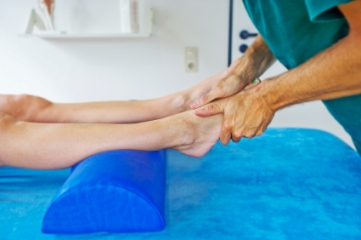In recent years, platelet-rich-plasma (PRP) injections have been used to treat a variety of sports injuries, ranging from severe tendonitis to muscle tears. As with any new treatment, there are a range of issues surrounding its use, particularly with children. Any parent facing tough medical decisions for their children understands this dilemma. Having quality information about treatment options is therefore critical.

Dr. Nathan Mall, associate physician for the St. Louis Cardinals and Director for the St. Louis Center for Cartilage Restoration and Repair at Regeneration Orthopedics, recently completed researching the topic of PRP injections. As a parent himself, he knows that, when your child is hurt, you will do anything to get them better. When it comes to PRP injections, though, he wants you to know to make an informed decision that is the best for your child.
PRP explained
"PRP is created when blood is drawn and placed in a centrifuge, a machine that spins the blood at a high rate of speed, which separates the various components of the blood," reports Dr. Mall. "The platelet component has various growth factors, which are thought to influence the healing process."
There are 4 major types of PRP.
- Pure PRP: low WBC (white blood count), anti-coagulated liquid;
- Leukocyte-rich PRP: high WBC, anti-coagulated liquid;
- Pure platelet-rich fibrin (PRF): low WBC, coagulated fibrin matrix; and
- Leukocyte-rich PRF: high WBC, coagulated fibrin matrix.
"It is important to note, " stresses Dr. Mall, "we do not fully understand which of these ratios are best for each condition to be treated.
Common injuries treated with PRP
PRP is used to treat a variety of musculoskeletal conditions, including acute and chronic injuries.
"The pathology of acute and chronic injuries are completely different," states Dr. Mall, " thus the use of PRP for each of these injuries must be evaluated."
Acute injuries include:
- MCL tears/sprains
- Rotator cuff tears
- Partial Thickness UCL (Tommy John ligament) tears[1]
- Labral Tears (shoulder); and
- Hamstring tears.[2]
These injuries often occur in a very short time frame, if not instantaneously, setting off the process of inflammation, regeneration, and repair.
Chronic injuries, in contrast, are the result of repeated trauma preventing the normal healing mechanisms from occurring. They include injuries such as:
- Lateral epicondylitis (tennis elbow);
- Medial epicondylitis (golfer's elbow);
- Patellar tendonitis (jumper's knee);
- ITB Tendonitis; and
- Arthritis
Treatment of last resort?
In my professional opinion," concludes Dr. Mall, "PRP should only be used for patients where all other treatments have failed who want to try one additional solution prior to surgical intervention." He notes that PRP injections can cost anywhere from $400 to $2,000 and, because the treatment is considered by health insurers to be experimental, are completely out-of-pocket.
"Furthermore, a series of three injections is sometimes suggested, making this treatment very pricey, says Dr. Mall, despite the fact that "there is little to no data to support the practice of using a series of three injections either." Additionally, he says, "We have not found the optimal platelet count that will produce improvement in symptoms or healing of tissue. The correct ratio of platelets to white blood cells also has not been determine and likely differs for various conditions."
The main side effects or risks with PRP injections are a painful flare reaction and the possibility of infection. While parents, coaches, and athletes should know that there are no significant side effects, and the risks associated with PRP injections are quite low, there is a significant differenc of opinion about the effectiveness of the treatment.
"PRP unfortunately is being used to treat many musculoskeletal problems," says Dr. Mall, "but we do not have hard and fast evidence that it works for any of these conditions. Studies that do show some improvement in pain or symptoms typically have low numbers of patients, do not report platelet concentration of the injected fluid, or lack control groups, or there are other studies that show no effect."Other treatments
There are a variety of treatments that are utilized to address acute and chronic injuries. Common treatments include:
- Rest
- Decreasing/Stopping irritating activity
- Stretching
- Eccentric strengthening
- Ultrasound
- Heat/Cold
- Electrical Stimulation
- Cross Friction Massage
- Astym (soft tissue therapy)
- Bracing
- Compression Wrap
- Medication (anti-inflammatories)
- Steriod Injections
- Acupuncture
- Cold Laser
- Diet (Omega 3s)
The majority of theses treatments can be facilitated with a combination of physical therapy, home exercises, and interventions as needed, such as steroid injections, as indicated by the child's physician.
"Bottom line," Dr. Mall concludes, "it is hard to justify recommending PRP when it is so expensive out-of-pocket, and there is little to no data supporting its use."








